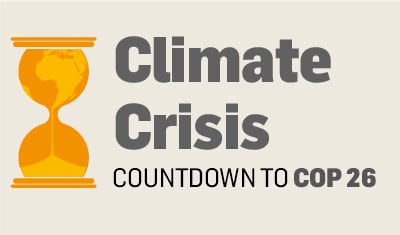Just in case you’ve never seen a Star Wars film, the ultimate physical expression of the evil empire’s evilness is a space craft named – subtlety – the Death Star. Looking a bit like one of those egg-shaped barbecues, it is the ultimate weapon in that it has the power to destroy a planet.
However, even the most rabid Star Wars fan should admit (but won’t) there’s nothing wildly original in this. Planet-destroying is a well-worn trope of science fiction. And when depicted in films or television, it can be a little bit underwhelming. You see a little blue ball in the middle of the screen that explodes. You might see people running about in terror on the planet’s surface. Usually, the goodies are observing this destruction from another, less Death Starry spacecraft and get a bit upset about it.

In fairness to the directors of such scenes, they are doing the best they can: it’s impossible to depict what the destruction of a planet would actually be like. At best, you can show individual aspects of it or reactions to what’s happening. But like the concept of eternity or an expanding universe (expanding into what?), we can use the words but be unable to fully comprehend the entire event. It’s too much to take in. The human mind has its limits.
Another, more earth-bound example: Styrofoam.
We humans make nearly 13 million tonnes of polystyrene every year and you may well have had the experience of feeling your heart sink when you excitedly open a parcel and find it there. Mostly, it can’t be recycled. When you break it apart to shove it in the bin, tiny bits go everywhere. Literally. They break down into particles and chemicals that enter the water, the soil and the bodies of living things, including humans. It will outlive those humans. And it’s not good for living things. I base this on my experience of cleaning the kitchen floor after the dog ate some. The smell was so gag-inducing, I considered counselling for PTSD.
So, while you can comprehend the polystyrene in your bin or in your dog, it’s trickier to imagine all of it, it’s overwhelming ubiquity. If aliens did arrive in their Death Star, it’s likely that they would analyse our world and call it Planet Styrofoam.
This example isn't mine. It comes from a philosopher called Timothy Morton and it's what he would call a hyperobject. Now this is a junior infants version of his ideas – my mind certainly has its limits – but a hyperobject is something that is so large that it's almost impossible to comprehend. Another example he cites is climate change: it is so all-encompassing, with so many moving parts that it's difficult to take in. It's overwhelming.
This may explain why, for some, it’s easier to deny its existence; or for others why it might prompt a reaction of despairing whataboutery: what’s the point of doing anything when the Chinese are building coal generators or the Brazilians are increasing their cattle herd.
For everyone else, there’s the constant gnawing stress of knowing that nearly every action we take, no matter how mundane, is now weighted with environmental implications: driving the car to the shops, throwing away a sweet wrapper, buying something online. They are tiny actions, yet they feed into a planet-changing process that is unimaginably huge.
Morton argues this should change the way we view our planet: not just as a place of humans, animals and “nature” but a world where everything is interlinked, including all the waste we produce, all the gases we shoot into the air. As with Styrofoam, it’s all mixed up together now. We take responsibility for all of it.
This won’t help us to comprehend the entirety of the task at hand. We’ll still only see parts of it. We can’t, as yet, see the destination.
We just have to keep moving, one step at a time.








